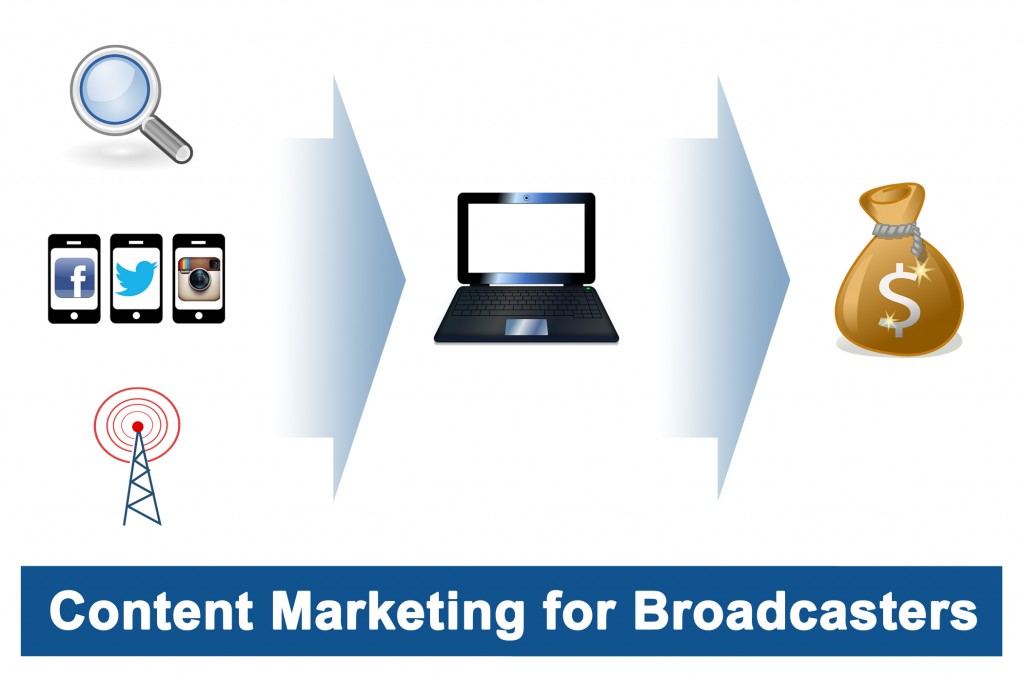 I’m just weeks into my new role as the Digital Dot Connector at Jacobs Media and if we’ve had the opportunity to connect, you’ve probably heard me use the phrase “Content Marketing.”
I’m just weeks into my new role as the Digital Dot Connector at Jacobs Media and if we’ve had the opportunity to connect, you’ve probably heard me use the phrase “Content Marketing.”
My job is to help you connect the dots of your digital efforts — your website, email, social media, analytics, etc. “Content Marketing” is the strategy that we’re going to use to connect those dots. (You may also hear it referred to by the nearly interchangeable names “Inbound Marketing” or “Permission Marketing.)
We know that all of you are involved in digital initiatives of one kind or another. You’ve invested in people, infrastructure, and in some cases, training. And yet we also know there are times where you wonder how it all works together and what the unified purpose of all these efforts really is.
That’s where Content Marketing comes into play. So where did it originate and how can it work for your brand?
- I did not invent this strategy. I only wish I were that smart.
- This is not a strategy that is exclusive to radio. It’s used by thousands of companies around the globe in a variety of industries.
- This is not a strategy that is exclusive to the internet. But the internet has dramatically increased the effectiveness of this strategy.
- This is not a new strategy. Content Marketing has, in some form, been used for at least a century. For example, in 1900, the Michelin tire company published the first Michelin Guide full of tips for drivers. In 1904, Jell-o published a recipe book. These promotional items employ the same content marketing principle that we’ll be using to help grow your station’s brand equity and revenue.
What is Content Marketing?
Here’s the simplified version: First, we want to create compelling content to attract people to our website. We want that content to have three features:
- It’s easy to share on social media
- It’s easy to find in search engines
- It’s easy to talk about on our airwaves
We use these three channels — social media, search engines, and our airwaves — to bring people back to the content on our website, an asset we own.

But it doesn’t end there. Once they’re on our website, we then want them to do something. In fact, there may be several “somethings” that we want them to do. The possibilities include (but are not limited to):
- Listen to the station
- Sign up for our email club
- Click on an ad
- Enter a contest
- Purchase concert tickets
- Request advertising information
We call each of these actions a “goal.” Every time a visitor completes one of our goals, it is called a “conversion.” Our goal is to maximize the number of conversions from our station’s website.
Ultimately, each goal should connect back to the station’s revenue. Some, such as requesting advertising information, will do so more directly than others, like signing up for the email club.
So there’s a purpose to all this effort and investment. And if we strategize, we can pull together all these channels and activities to help you make progress, grow your brands, and generate more revenue.
In the coming weeks, I’ll go into a lot more detail about how we can implement the different pieces of content marketing. I’ll lay out practical, actionable steps that you can take. For now, I just wanted to give you a 50,000-foot view of the overarching strategy.
More Digital Tips
- Website Usability Tests for Radio Stations in the Age of Zoom
- Generating Sales Leads with Content Marketing: Where to Start
- Is Your Radio Station Keeping Up With Its Weekly Web Meetings During The Pandemic?
- 5 Website Stats Every Radio Program Director Should Track
- Take These Steps Before Launching Your Next Big Radio Station Promotion
- A Simple Digital Treat to Thank Your Radio Listeners This Thanksgiving - November 13, 2023
- Interview Questions When Hiring Your Radio Station’s Next Digital Marketing Manager - November 6, 2023
- A Radio Conversation with ChatGPT: Part 2 – Promotions - October 30, 2023




